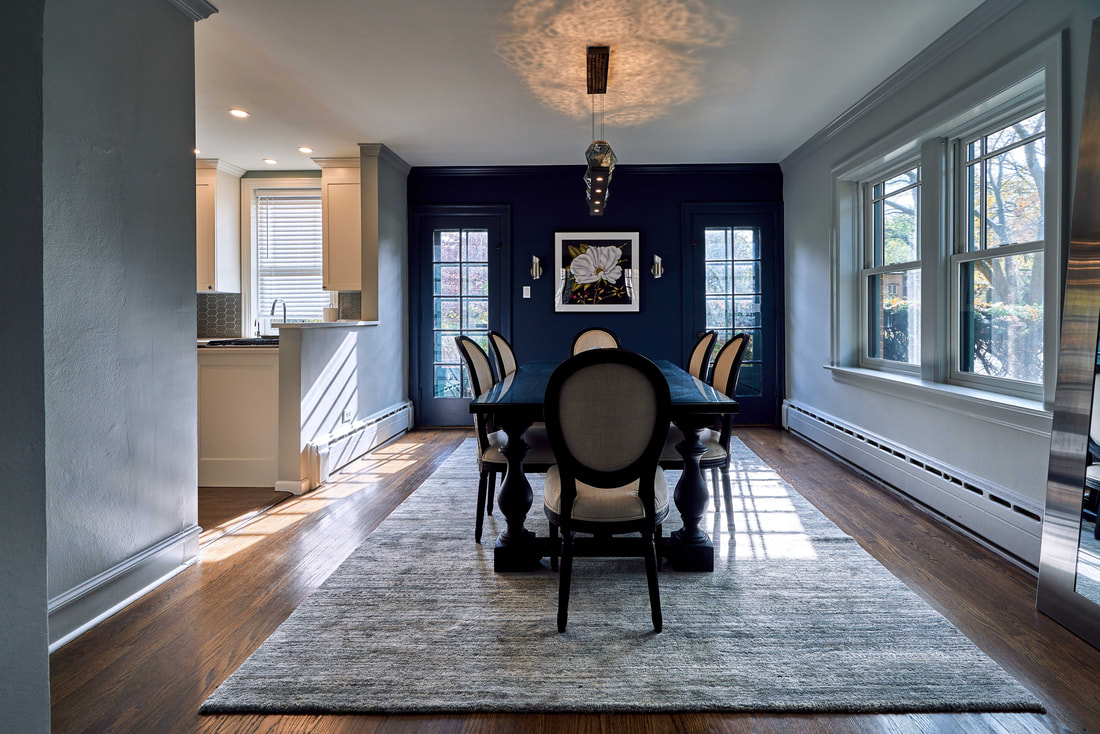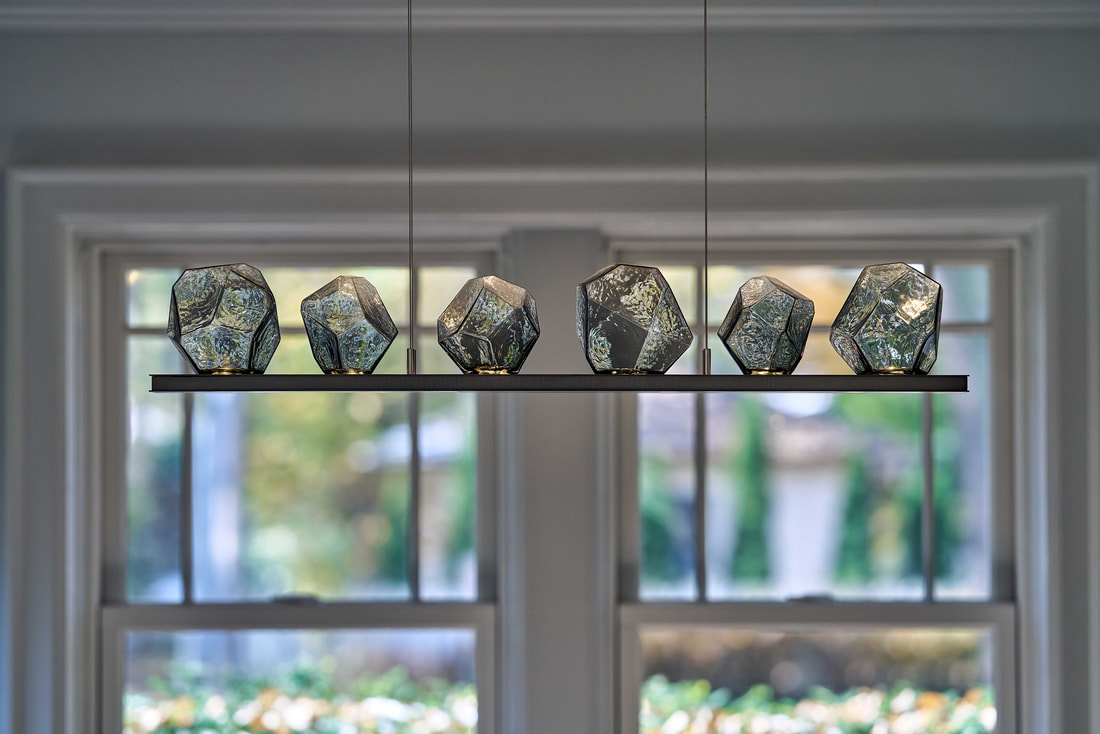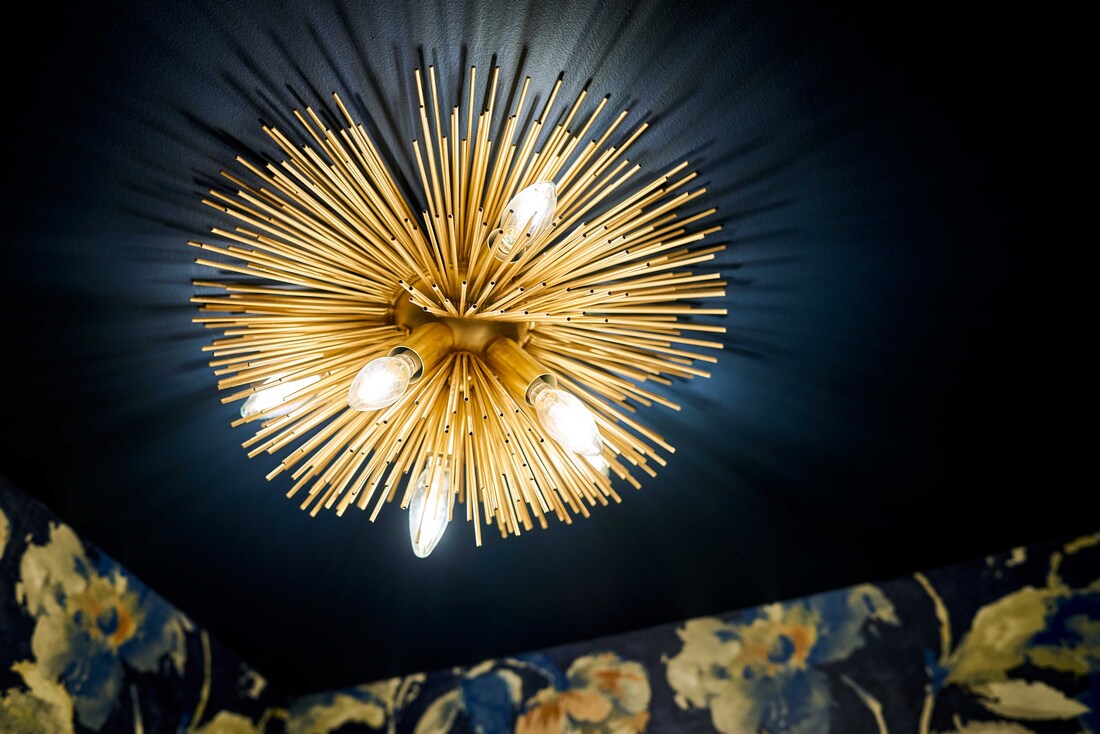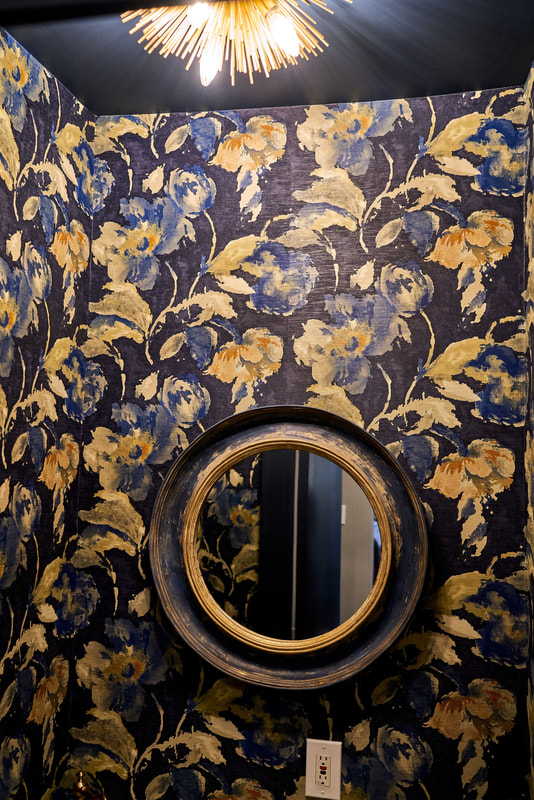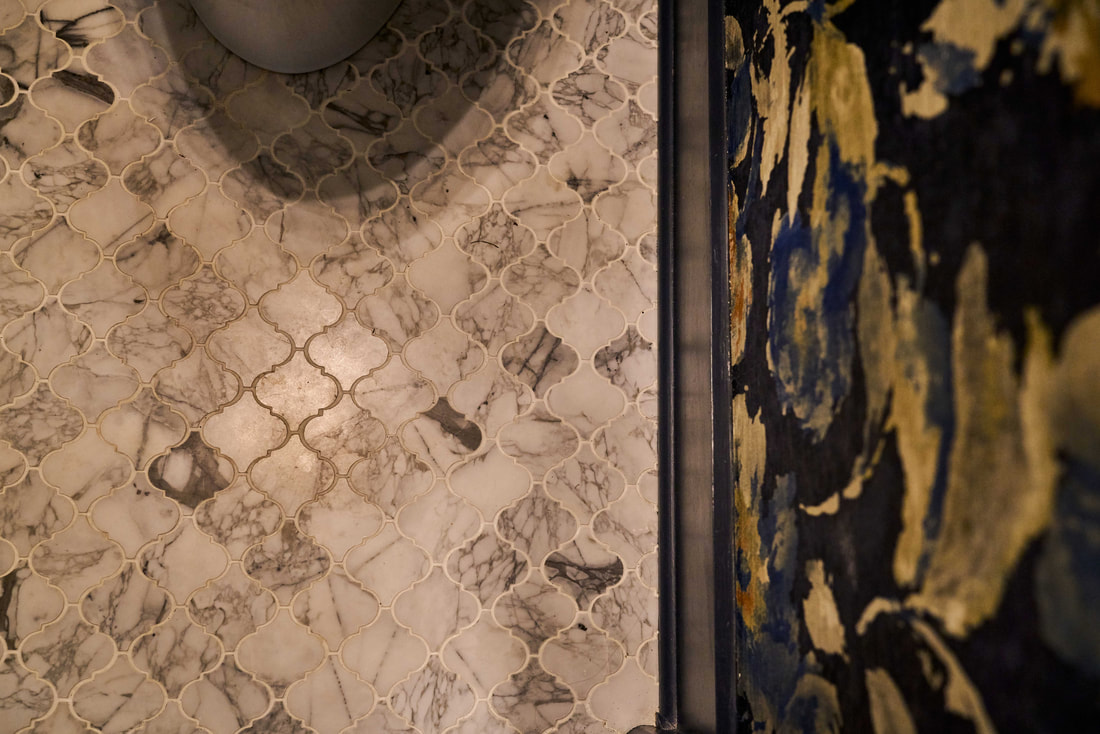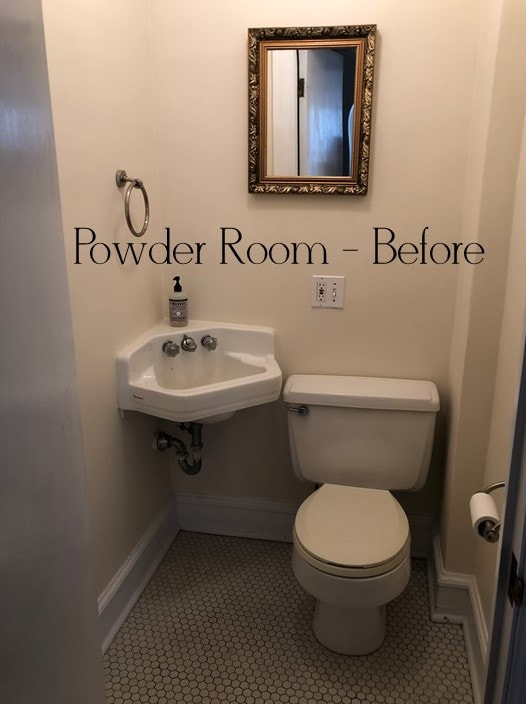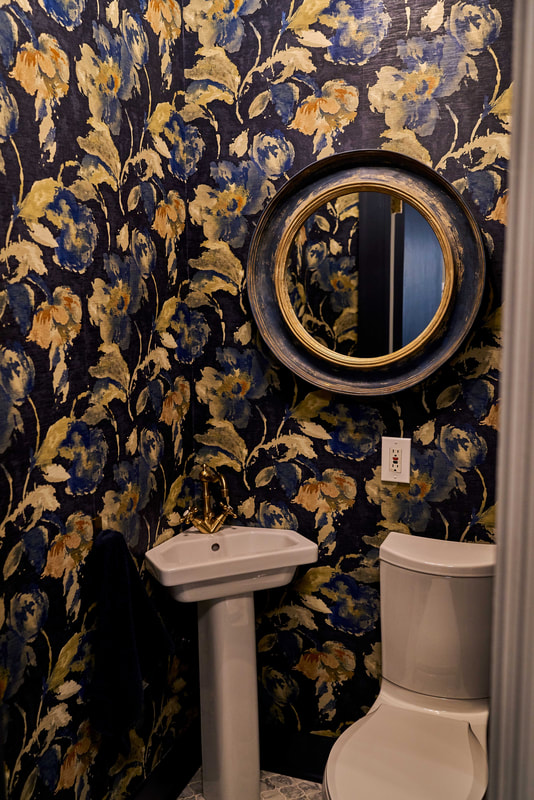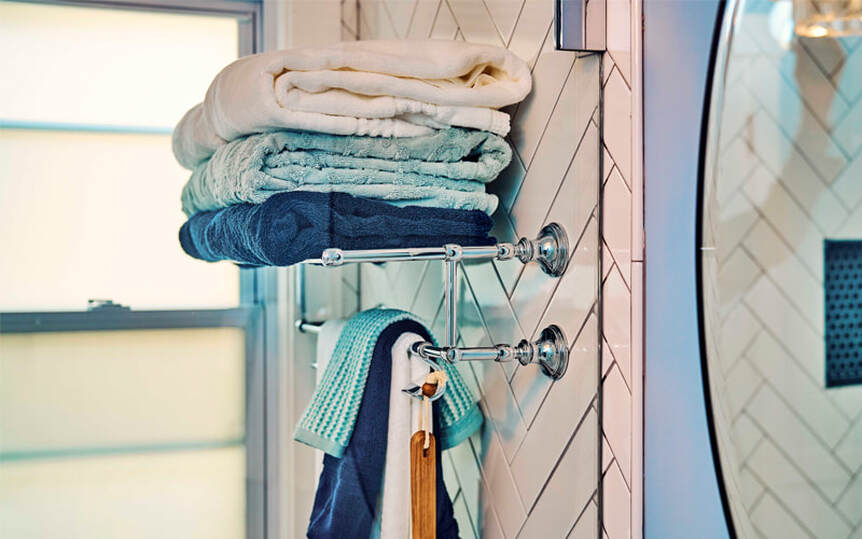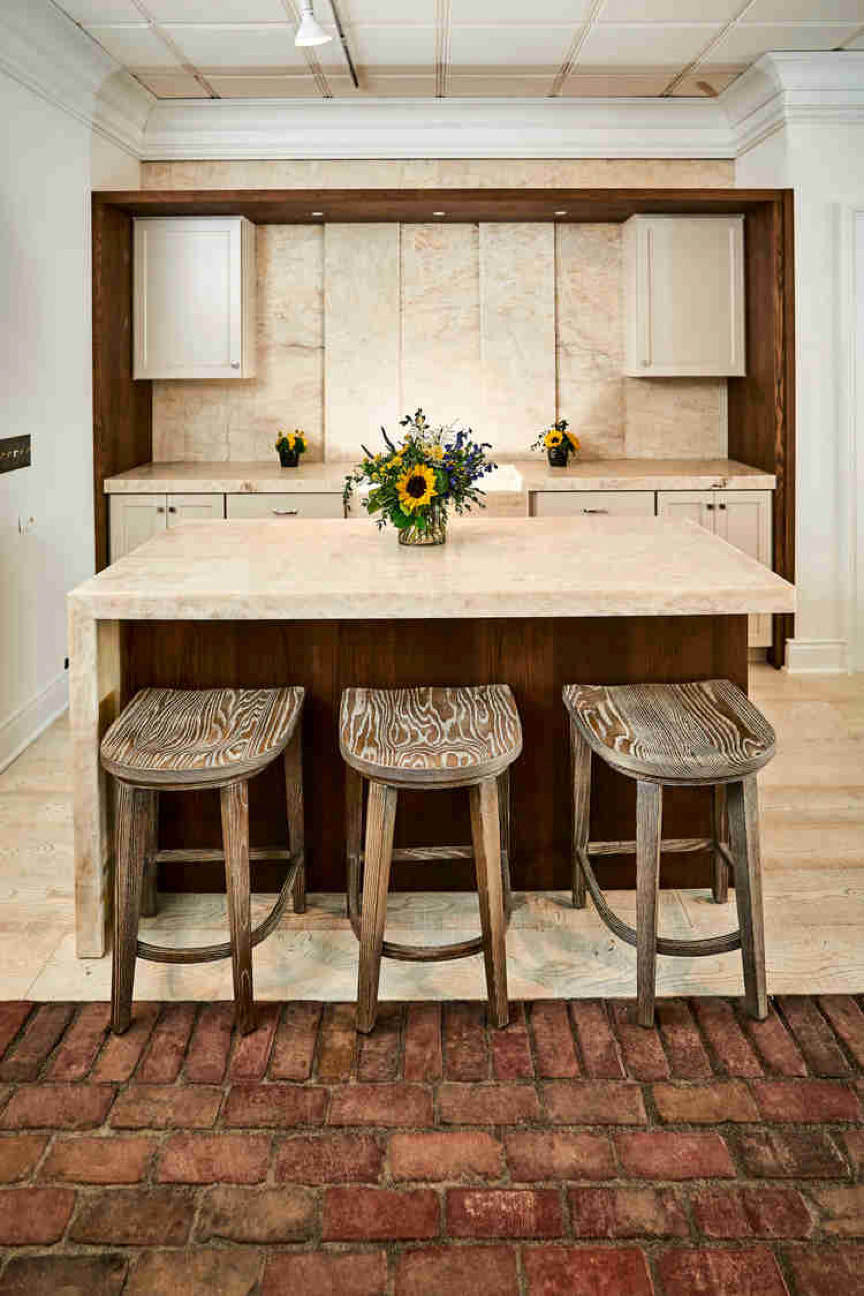|
We’ve all heard them. The “rules” of interior design. Pick up any shelter magazine or click on a blog and some self-proclaimed expert is pontificating on the “foolproof rules” they’ve developed to ensure a beautiful space in your home. I’m here to question that. In fact, another word for rules that don’t stand scrutiny is “Brules.” (Brule Definition: A bull%*#@ rule. (Per Vishen Lakhiani in his book The Code of the Extraordinary Mind.) While there seem to be as many rules as there are design publications, here are a few widespread ones that need to be reclassified as “brules.” 1) “Accent walls are out” Granted, back in the 90’s when people went a bit accent-wall happy, we all felt like a much-needed respite from the ubiquitous fourth wall. But, used judiciously and thoughtfully, accent walls can achieve a few #spacegoals for your home. In the dining room pictured above, the room would have much less impact if all the walls were the same color. The gray (Benjamin Moore’s Coventry Gray) might have fallen flat, and the navy (Benjamin Moore’s Hale Navy) would have been too dark in this space. Painting just the far wall Hale Navy encourages people to move towards that wall, beckoning them into the room. In addition, it provides enough drama to offset the fabulous statement chandelier. Thinking about this room leads me to another brule: 2) “Trim should always be painted white.” White trim can be a crisp and beautiful addition to a room. But within a smaller space, especially one with more than one wall color already (not to mention a lot of trim), this advice can lead you astray. If this dining room had had its trim painted white, imagine how visually noisy and distracting that would have been. Not to mention how it would have largely negated the impact of the accent wall in the first place. Between the door frame and mullions, as well as the crown and base molding, that would have been a lot of white lines interrupting the picture. Instead, we painted the trim on each wall the same color as the walls, but in a slightly higher sheen (satin for the trim, versus eggshell on the walls). In this way, the trim harmonizes with the rest of the room, leading to an undiluted pop of color on the accent wall. This brings me to a corollary of this one, namely: 3) “Ceilings should always be white.” My first reaction is “Why?” Why not treat the ceiling as the fifth wall it is and give its color/treatment as much thought as you gave the vertical four walls of the room? In this powder room, we doubled-down on the impact of this sophisticated floral wallpaper by painting both the substantial trim - and the ceiling – Hale Navy. As seen above, the navy ceiling perfectly sets off the modern glam ceiling light in a way that white would have failed to do. And going back to the preceding point, that navy baseboard trim certainly complements both the wallpaper and the marble flooring. This powder room brings me to the last brule I’ll address in this post: 4) “Small rooms should be painted white so that they seem bigger.” This rule is a total falsehood. Take a look at this same bathroom – with white walls – prior to the homeowner decorating the home in her taste. Then the after photo: Instead of making the room seem more spacious, the white walls, trim, and floor actually appear lackluster and gray. This space had – and realized – so much more potential than that.
The takeaway from this post? Whenever you’re given a design rule, ask yourself if it works for you and the way you want your home to look and feel? And if you’re having any difficulty deciding, we’d love to help you!
0 Comments
Before hiring a General Contractor for your remodeling project, it’s wise to gather the following information about them. 1) Ask for proof of general liability, workers’ compensation, and property damage insurance, as well as the limit amounts of their policies. Request a COI (Certificate of Insurance) on each policy for your project file. 2) Ask for a copy of their current GC’s license. Your local building department will give you the licensing requirements for your specific area.
3) Ask for three or more references. Call the three most recent clients. Ask these clients questions, such as: a. How clean did the project crew keep the worksite? b. How did the crew protect the rest of the house from construction dust? c. Did you receive at least weekly project status updates? d. Was the contractor available for questions via phone call and email during your project? e. Were there any snags in the process and how did the GC resolve them? f. Was the GC’s written estimate adhered to or exceeded? g. Was the project completed in a timely manner? If not, what caused the delay and how did the GC resolve it? 4) Request a detailed, written, estimate. Review it carefully to ensure the entirety of your project’s scope is included in this estimate/proposal. Companion animals, and their ability to unconditionally love us, enrich our lives. These “furry babies” enter our hearts and become members of the family. On the other hand, pets can be really tough on your home’s furniture and finishes. How does having a pet influence your efforts to live beautifully? Do you simply give up having an elegant home with pets? Modern design technology has some answers for pet owners with a penchant for beautiful interiors. Laddie (pictured above) is a typical dog in that he enthusiastically greets every new experience with unalloyed joy. Like exuberantly splashing in mud puddles on a rainy day’s walk. At this point, your first line of defense is giving your buddy a good rinsing and toweling off – preferable before he enters your home! One terrific idea I’ve been seeing for mud rooms is building an enclosed dog washing area, complete with a faucet and a drain, at the back door of the house. Of course, mud and water aren’t the only potential hazards to the pet lover’s home. While hard flooring surfaces, such as hardwood and tile, can be surface cleaned, area rugs are a different matter. Generally, it is a good idea to stay with wool area rugs and steer clear of silk or viscose fibers. Even with wool rugs, it is recommended that you consult with your designer or rug vendor about treatments that can be professionally applied to your fine wool rug to help protect it from long term damage by Fido and Mr. Whiskers.  Wendy Cat Wendy Cat Whether or not to allow pets on your home’s upholstered furniture is generally a conscious choice on dog parents’ parts, at least. As a cat mother, my best intentions have been ceaselessly subverted by Wendy’s (pictured above) insistence on claiming “her” seat on the family sofa. Today’s high performance fabrics are up to this challenge. One name to remember in your next upholstery fabric search is Crypton. This proprietary process begins with the fabrics fibers, so that its stain, spill and odor-resistant qualities do not wear off, as was the case in previous surface anti-stain treatments. Another way to safeguard your upholstered furniture is to bring a bit of the outdoors inside, with indoor/outdoor fabrics. You may have heard of these type of fabrics under the trade name, Sunbrella. If you haven’t checked indoor/outdoor fabric out in while, it’s time to change that. The newest of these fabrics include lush velvets and sturdy chenilles – all solution dyed and light fast. A lot of them can be cleaned with a bleach solution (check individual fabric care instructions). A great place to begin your search is via Fabricut’s Bella Dura and Crypton fabric collections (https://www.fabricut.com/). With today’s design technologies, pet lovers can enjoy their homes and their beloved pets – relatively worry-free. Have you found another idea for living beautifully with pets? Please share your ideas in the “Comments” section below. |
BlogCategoriesArchives
March 2024
|

